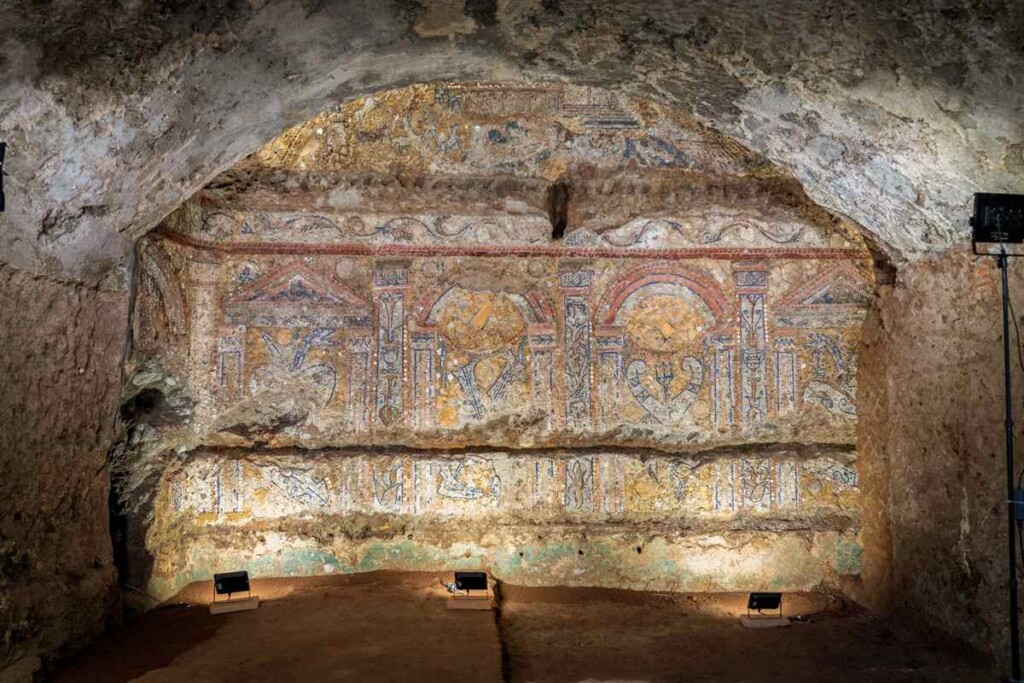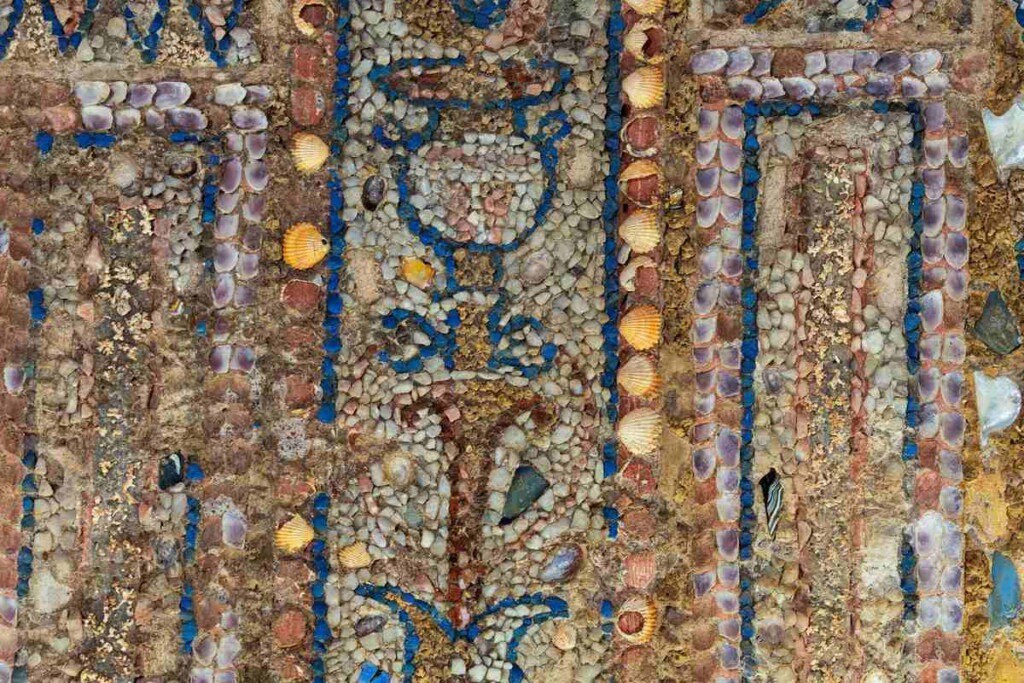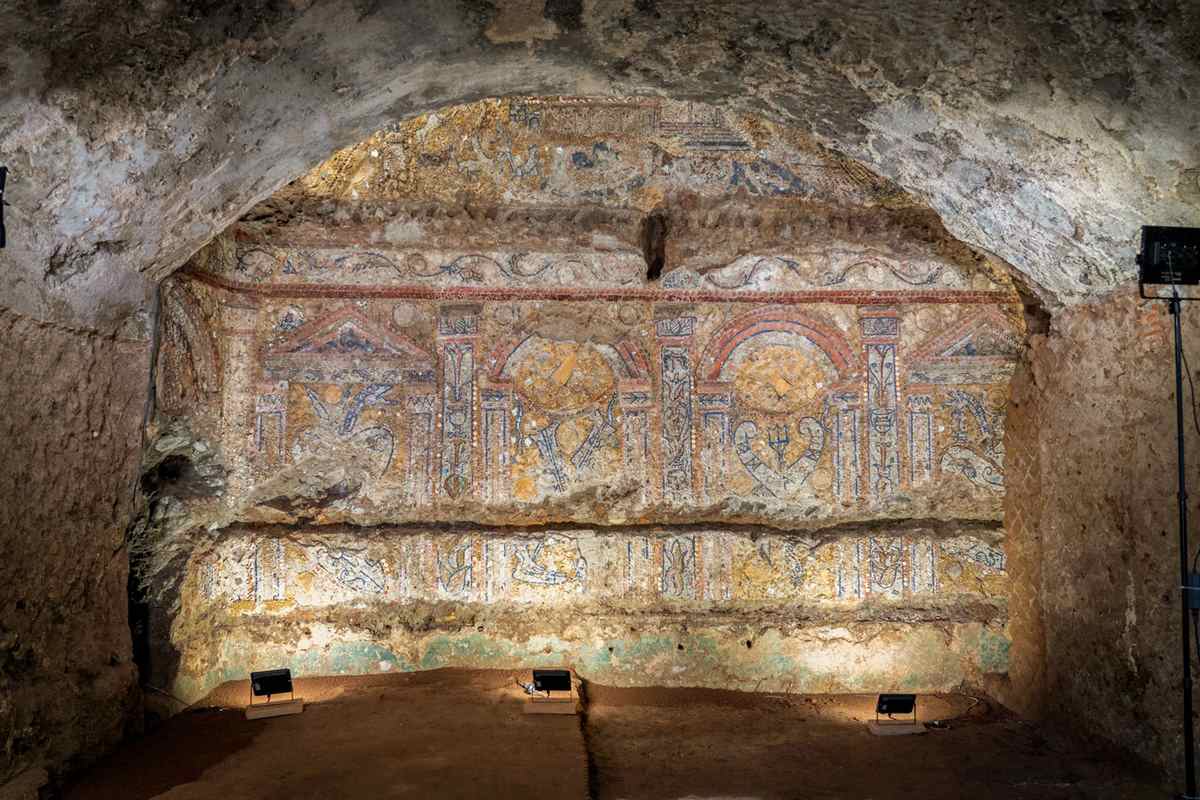
Excavations into the side of the famous Palatine Hill in Rome have uncovered the banquet hall of a wealthy aristocrat that contained a mosaic made almost entirely of materials from the sea.
At 16 feet long and 2,300 years old, the incredibly detailed mosaic was made of seashells, coral, mother of pearl, blue glazed tiles from Egypt, flecks of marble, and Roman glass, and depicts sailors, ships, mythical sea life, trumpets, and tridents.
Those elements fit into a narrative scene that likely celebrated the naval victory of the owner of the banquet hall. A hill town surrounded by a wall overlooks the sea where two fleets of vessels pass, one in triumph, the other being devoured by sea monsters.
“In ancient times, when powerful noble families inhabited the Palatine Hill, it was customary to use rich decorative elements as a symbol to show off opulence and high social rank,” said archaeologist Alfonsina Russo, head of the Colosseum Archaeological Park in charge of the site.
She told CNN that water themes didn’t stop at the mosaic, but that the banquet hall overlooked a garden where lead pipes carried water out of various statues and fountains to create “water games,” another part of the fun for the wealthy aristocrats.

Aside from the obvious beauty of the piece, the preservation of the mosaic was impressive.
ALWAYS BUSY TIMES IN ROME: Rome Finally Opens to Public the Spot Where Julius Caesar Met His End at Senators’ Hands
“Mosaics are usually found on floors, but this runs across the entire front wall and has been incredibly well-preserved,” said Marco Rossi, professor of Roman antiquities and head of the mosaic lab at Rome’s Università degli Studi di Roma. “It’s not been ruined by the weight of debris—as can happen to some mosaics on the ground.”
Russo and Rossi believe that its location on the Palatine is the secret. Buried eventually by mud and soil as the land shifted, it trapped relics like the mosaic wall from being exposed to damaging oxygen.
MORE ROMAN FINDS: 2,000-year-old Roman House Uncovered in Malta Reveals Ancient History of Wealthy Society
At the moment, the most important piece of the puzzle for the archaeologists is missing: the identity of the person who could afford to pay for the materials and artisans for the wall mosaic’s construction.
Even before that will be located however, the room will be open to the public in late January, as it’s considered a truly staggering display of Roman luxury.
SHARE This Stunning Find From The Eternal City With Your Friends…




















